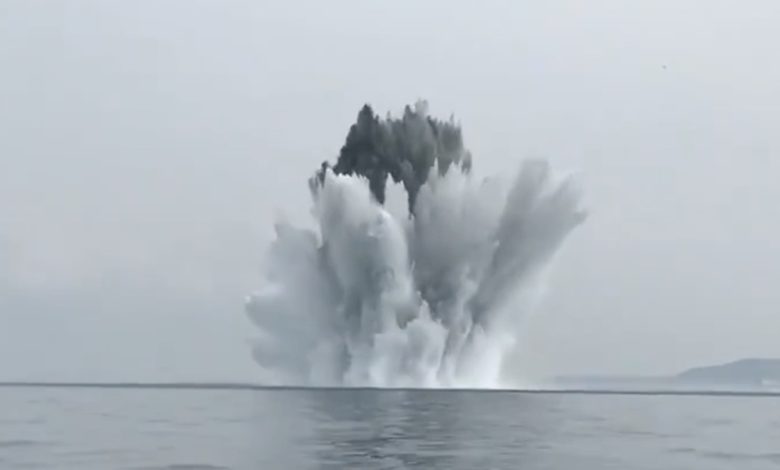
A series of suspected limpet mine attacks and unexplained blasts targeting commercial tankers in the Mediterranean has reignited concern over the evolving nature of maritime threats.
“These incidents – marked by stealth, ambiguity, and geopolitical undertones – signal a shift in the maritime risk landscape that demands a recalibration of both operational vigilance and strategic foresight,” Norwegian P&I club Skuld urged in a release.
The explosion last week aboard the Vilamoura, a Marshall Islands-flagged suezmax tanker owned by George Economou’s TMS Tankers, is the fifth such incident in 2025 alone. The blast occurred approximately 90 nautical miles off the Libyan coast shortly after the vessel had loaded 1m barrels of crude oil from Libya’s Zueitina Terminal. While the crew was unharmed and no pollution was reported, the vessel sustained significant damage and required towing to Greece.
“Preliminary investigations based on the damage sustained to the hull appear to have observed that the metal was warped inwards, suggesting an external explosion occurred and that an explosive device was attached to the vessel’s hull when it was in ballast condition,” stated an update from Vanguard, a maritime security specialist. While it remains unconfirmed, such an explosion would be characteristic of limpet mines, which have been suspected in recent previous cases.
Dryad Global’s June 2025 maritime security threat assessment identified a clear pattern of underwater explosive attacks targeting commercial oil tankers in the Mediterranean. Notable incidents include attacks on the Seajewel, Seacharm and Grace Ferrum earlier this year.
“The suspected use of magnetically attached timer-activated limpet mines indicates a high degree of planning and technical sophistication,” Skuld suggested.
A notable pattern has emerged: all five tankers targeted this year had passed through Malta’s outer port limits, and at least two had links to Libyan ports. More significantly, the Vilamoura had recently called at Russian oil export terminals, including Ust-Luga and the Caspian Pipeline Consortium terminal near Novorossiysk. This mirrors the voyage history of other affected vessels, leading analysts to speculate about a connection to Russian oil logistics.
However, no conclusive evidence has surfaced to confirm these suspicions.
“Theories involving unnamed state actors remain speculative, and the lack of attribution continues to frustrate both commercial operators and security agencies,” Skuld stated, adding: “This ambiguity severely hampers risk assessment and maritime threat forecasting.”
Skuld called for greater proactive vigilance among shipowners and operators. Maintaining heightened situational awareness, reviewing routing protocols, minimising port call exposure in high-risk zones, and ensuring crew preparedness is essential.
To mitigate exposure, shipowners and operators are advised by Skuld to conduct underwater inspections using divers or ROVs after high-risk port calls, and to train crews to recognise limpet mine indicators and maintain CCTV surveillance around hull areas.
- 国家能源局:2025年5月新增风光、生物质能项目4917个
- 广东湛江市:按照省部署支持分布式光伏项目规模化发展
- 盐城市滨海生态环境局受理盐城清能滨海八滩15MW渔光互补光伏项目公示
- 光伏座谈会更多细节披露,参会人士:整治力度更大
- Limpet mine threat in the Mediterranean grows
- Splash Wrap: Trump leads headlines in a calmer week for shipping
- ITF pushes for warlike status in Gulf hotspots
- 1死2伤!又一起光伏项目事故曝光
- Samsung Heavy teams up with PetroVietnam to build tankers in Vietnam
- Two dead, six injured in latest Russian missile attack on Odesa port




